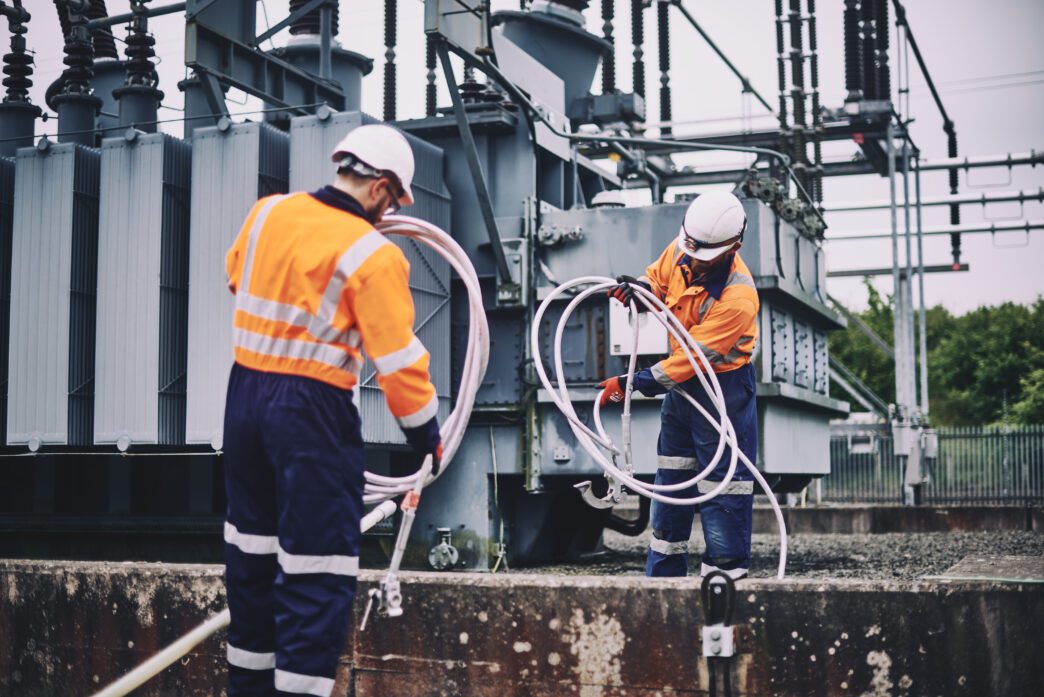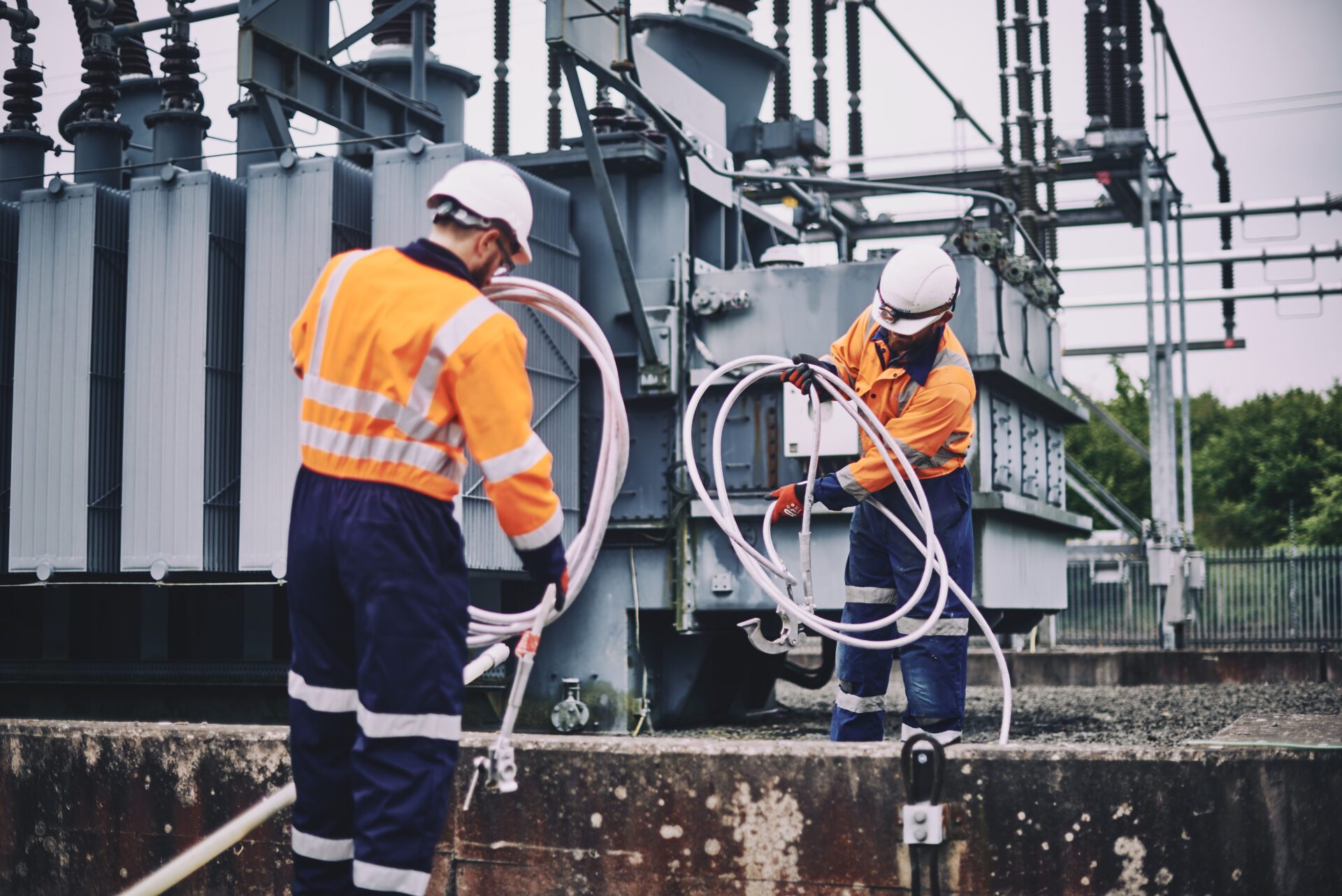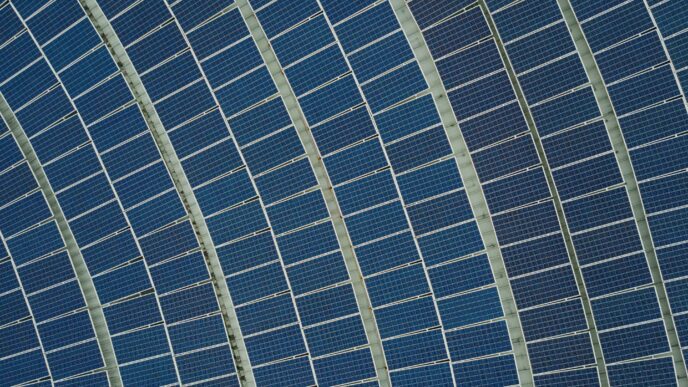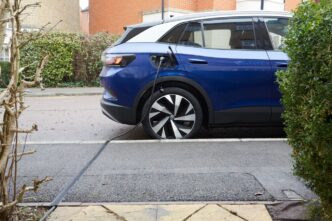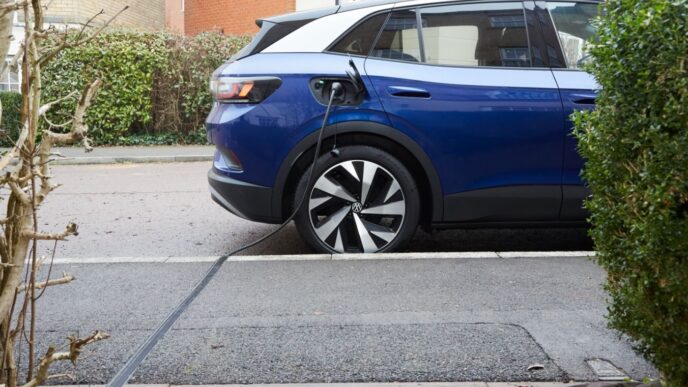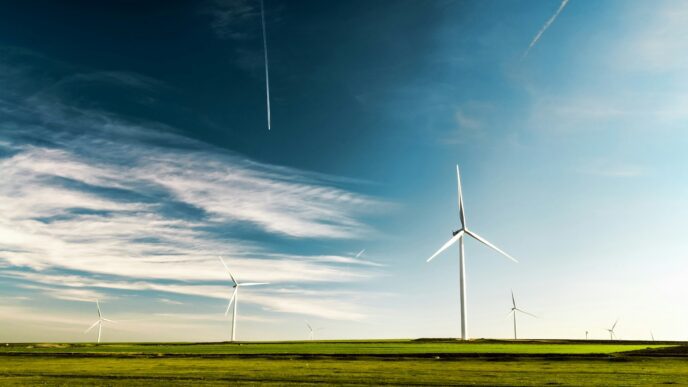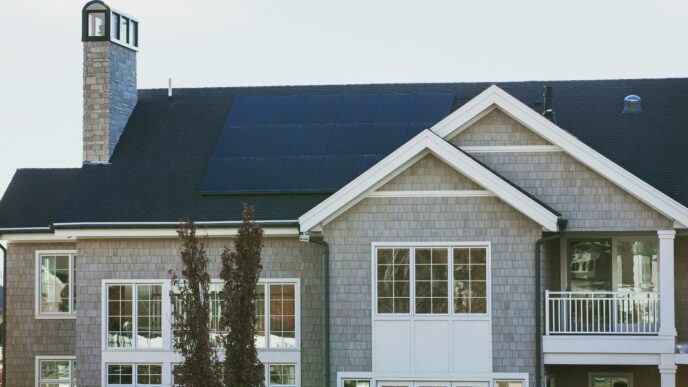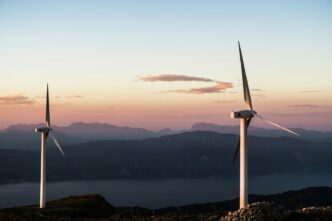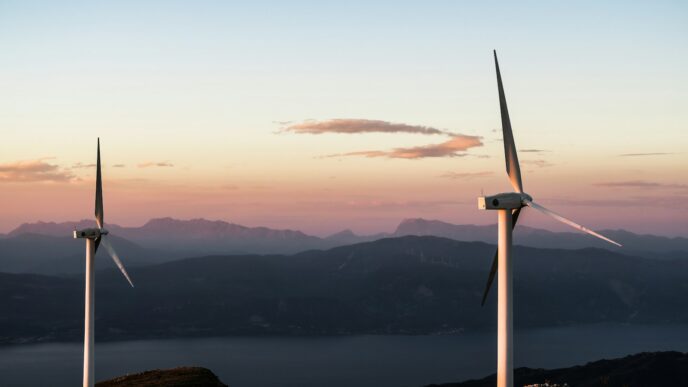Storm Amy exposed the imbalance between renewable output and grid capacity. Here’s what it tells us about the UK’s next energy challenge.
On the first weekend of October, Britain’s wholesale power price slipped below zero for hours on end. The reason wasn’t demand collapse—it was wind. Storm Amy sent gusts strong enough to cover nearly three-quarters of national electricity demand, yet the grid couldn’t move or store it all. Turbines across Scotland and the North Sea were ordered to power down, and generators were paid to stop producing.
Negative pricing has become a recurring feature of Britain’s energy market. It sounds counter-intuitive: why would we ever pay to get rid of power? But the answer reveals both the success of the UK’s renewable rollout and the limits of its infrastructure.
How negative prices happen
Wholesale electricity prices are set every half-hour on the UK’s day-ahead market. When renewable generation surges beyond what the grid can absorb or transmit, system operators must curtail output to keep frequency stable. To do that, they pay generators compensation—so-called constraint payments—which pushes prices into negative territory.
These events are no longer rare. In May 2025, the N2EX market logged 17 consecutive hours of negative pricing. Analysts expect 2025 to set another record year for negative-price hours, driven by mild demand, high wind output, and limited transmission from north to south.
Constraint payments are now costing the system more than £1.5 billion a year, roughly a quarter of which goes to wind farms that are paid to switch off. That cost ultimately feeds back into bills.
Britain’s bottleneck: the grid itself
Most new wind capacity sits in Scotland and the North Sea, while most demand lies in England’s industrial and urban south. The high-voltage transmission system between them is the choke point. When wind ramps up in the north and cables south are full, there’s nowhere for the excess to go.
National Grid calls its response the Great Grid Upgrade—a decade-long programme of new high-voltage direct-current (HVDC) links and reinforcement lines intended to double Britain’s north-to-south transfer capacity. The Eastern Green Links 1 and 2 projects alone will carry up to 4 GW of renewable power from Scotland to England by the end of the decade.
The quick fixes: storage, flexibility, interconnectors
Battery storage
Britain’s battery fleet has exploded from under 1 GW five years ago to more than 6 GW in operation and nearly 20 GW in the pipeline. Modern two-hour and four-hour systems can soak up cheap excess wind and discharge during evening peaks. Every new gigawatt reduces curtailment costs and stabilises pricing.
Demand Flexibility Service (DFS)
Launched in 2022, DFS pays households and businesses to shift usage away from peak hours. It’s now embedded as a permanent part of National Grid ESO’s balancing strategy. Last winter alone, DFS delivered over 3 GWh of shifted demand—enough to offset multiple peaking plants for several evenings.
Interconnectors
Britain’s newest interconnector, Viking Link, connects Lincolnshire to Denmark with 1.4 GW of bidirectional capacity. More cables to France, Belgium, Norway, and the Netherlands are either under construction or planned, letting the UK export surplus wind during storms and import power during calm spells.
Hydrogen as a long-term sink
The government’s Hydrogen Allocation Rounds aim to back low-carbon hydrogen projects that use curtailed renewable power as feedstock. Converting excess electricity into hydrogen could eventually turn wasted wind into storable energy or industrial heat.
What it means for consumers
Households on standard fixed or variable tariffs won’t see negative prices directly, but dynamic tariffs—such as Octopus Agile—can pass them through. Some consumers already charge EVs or run heat pumps when wholesale prices dip below zero. For businesses with flexible demand, negative periods offer real cost savings.
The wider benefit is indirect: lower balancing costs and fewer constraint payments should ease system costs over time, provided new infrastructure keeps pace.
Lessons for 2030
- Build flexibility as fast as generation. Batteries, flexible demand, and interconnectors must scale alongside new wind capacity, not years later.
- Fix the transmission bottleneck. North-to-south HVDC routes are the most efficient way to cut curtailment and constraint payments.
- Reward demand that moves. Incentives for time-shifting consumption—through tariffs or automation—are cheaper than paying generators to stop.
Negative prices are a symptom of abundance. They show that Britain’s clean-energy transition is working, but the grid is still catching up. The faster we strengthen the wires, storage, and flexibility behind it, the sooner cheap wind stops being wasted—and starts paying back.

